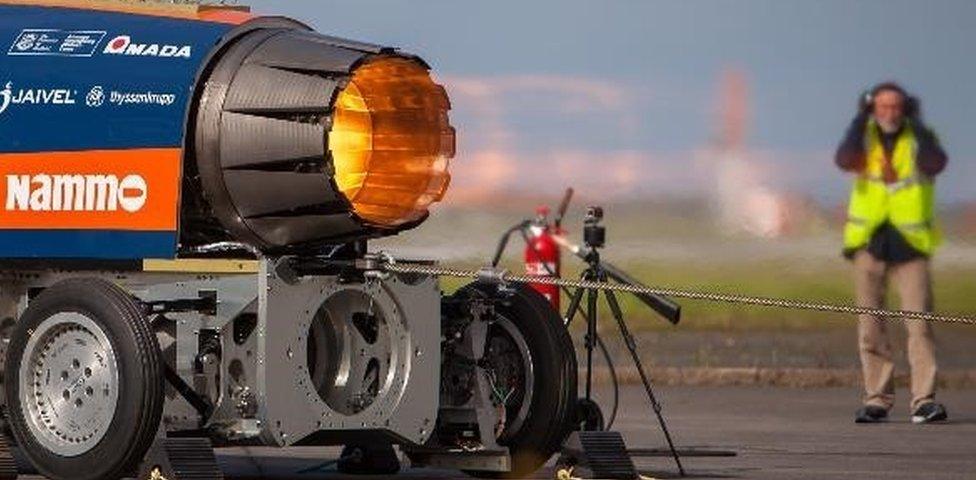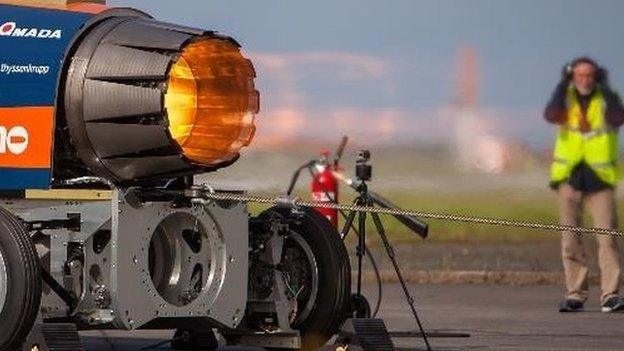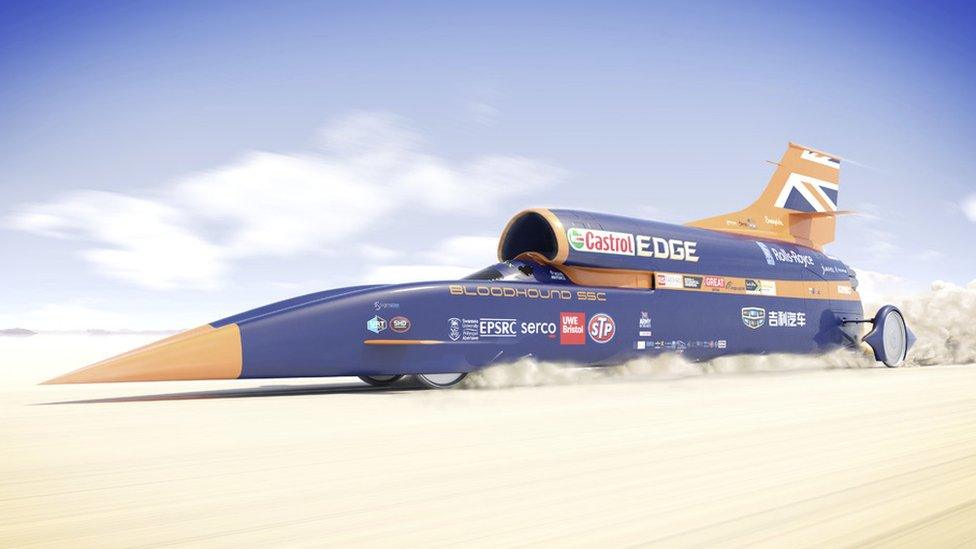Bloodhound supersonic car project saved
- Published
The Bloodhound car was tested in Newquay, Cornwall, last year
A 1,000mph race car project has been saved after an entrepreneur stepped in to buy the business.
The Bloodhound supersonic vehicle, external - built with a jet engine bolted to a rocket - is all but finished.
Its future was in jeopardy amid a failure to secure investment which forced the firm financing it into administration.
But Yorkshire-based entrepreneur Ian Warhurst has bought the project for an "undisclosed amount".
Mr Warhurst, who sold Barnsley engineering firm Melett earlier in December, said it would have been "criminal" not to continue with the record attempt.
"There's a bit more sorting of the car to do, but nothing major, to get to that first step of testing it at high speed," he said.
"That's what made it such a shame, because they had got as far as they had. It just had to carry on."
Administrator Andrew Sheridan said: "Ian has a strong background in managing highly successful businesses in the automotive engineering sector and he will bring considerable expertise to bear in taking the project forward."
The Bristol-based team behind the Bloodhound project aims to beat the existing land speed world record of 763mph (1,228km/h).
It is due to attempt to reach a record-breaking speed in South Africa, where an 18km-long (11-mile), 1,500m-wide (4,921ft) track at Hakskeen Pan in the Northern Cape has been prepared.

The vehicle was tested at Newquay Airport
Previous test runs at Newquay Airport in 2017 saw Bloodhound reach speeds of 200mph (320km/h).
The project planned on running on Hakskeen Pan towards the end of 2019, when the water in the lakebed evaporated and the ground had become dry.
The Bloodhound, using a Rolls-Royce Eurofighter engine alongside a rocket, was then due to be tested at 500-600mph (800-965km/h) before approaching its top speed in further test runs during 2020 or 2021.
- Published7 December 2018

- Published15 October 2018

- Published6 August 2018

- Published16 May 2018

- Published26 October 2017
